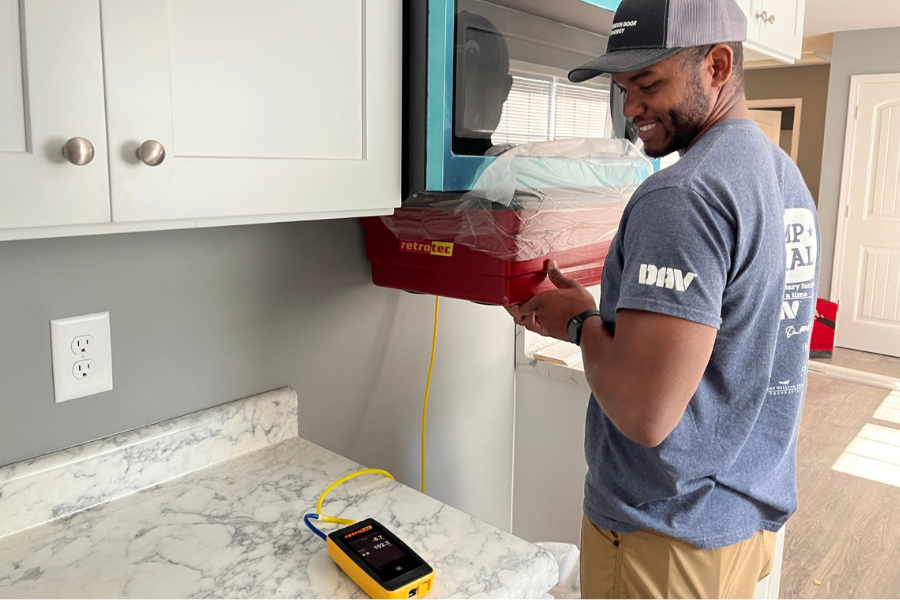May 24, 2024
Lessons Learned at the National Home Performance Conference 2024
Here are the biggest takeaways from this year’s National Home Performance Conference in Minneapolis.
By: CLEAResult

This April, the Building Performance Association (BPA) hosted its annual National Home Performance Conference (NHPC) in Minneapolis, MN, attracting over 2,000 professionals from various sectors within the industry, including contractors, energy auditors, and program administrators. Attendees learned about the latest advancements in residential energy efficiency and gained valuable insights into emerging trends, innovative techniques, and actionable steps aimed at boosting residential efficiency and enhancing energy utilization.
Here are our biggest takeaways from this year’s conference.
Collaboration is key to Inflation Reduction Act (IRA) program success
Rick Counihan, Senior Vice President of Government Affairs at AnnDyl Policy Group, led a discussion with Elena Chrimat, co-owner of Ideal Air Conditioning and Insulation, and CLEAResult’s Market Development Director, Seth Little, to explore how contractor engagement can shape the IRA’s Home Energy Rebate initiatives. They emphasized the critical role of contractors’ input in designing these rebates and the efforts made by program implementers to incorporate such feedback. This cooperative approach is crucial as contractors strive to comprehend and navigate the complexities of the new policies, not only for their success but for the benefit of their customers.
Ultimately, programs must ensure a consistent, easily navigable customer experience for all participants. Every stakeholder, from the Department of Energy to state energy offices, implementers, contractors and customers, must collaborate to achieve the most effective program design.
Smaller non-energy benefits yield significant impacts and savings
Advancements in energy efficiency lead to more than just energy and demand savings; they can introduce a range of non-energy benefits (NEBs). Although these NEBs are often difficult to quantify, their influence can be significant for utilities, households and whole communities.
CLEAResult Senior Practice Consultant Thomas Anreise joined Bruce Manclark of Earth Advantage and Dan Wildenhaus from the Center for Energy and Environment to delve into how utilities can harness a range of advantages, including but not limited to reduced emissions, creating jobs, cost savings, and mitigating risk. Homeowners and tenants can enjoy improved safety, better health and comfort, as well as increased property values due to these initiatives. The speakers agreed that the broader impact of energy efficiency manifests in various ways that standard metrics might not fully capture, and assigning a strict monetary value to NEBs could potentially undervalue their positive impact.
A divide-and-conquer approach could ease challenges with rural housing decarbonization

Reducing or eliminating carbon dioxide (CO2) emissions is essential in the fight against climate change and the management of global warming. Yet, rural communities face unique challenges in this endeavor. CLEAResult’s Rebeca Barios-Hurst, Senior Practice Consultant, and Mike Black, Associate Program Manager, along with Angie Bivins from Pepco and Alex Boetzel from Earth Advantage, presented on these challenges and the potential solutions that could transform energy use in remote areas and drive sustainability.
Rural regions typically have limited access to renewable energy sources like wind, solar, and geothermal due to inadequate infrastructure and a lack of funding for implementation. Additionally, industries like mining and agriculture in these areas are often dependent on fossil fuels, raising concerns about job losses and economic stability. Other obstacles include terrain, climate conditions, social norms, and a lack of awareness and trust.
To overcome these barriers, creative and inclusive strategies are needed, as well as securing financial incentives from both public and private entities. For broad implementation, all housing types must be able to benefit from decarbonization efforts. Simplifying regulatory processes and leveraging technology can mitigate perceived disadvantages and advance decarbonization in rural communities.
Events like the NHPC are invaluable for networking and exchanging ideas with peers within the industry. This year’s conference was one of many exceptional events we’ve participated in, and we’re looking forward to many more.
This article was originally published in the CLEAResult blog and is republished with permission.





